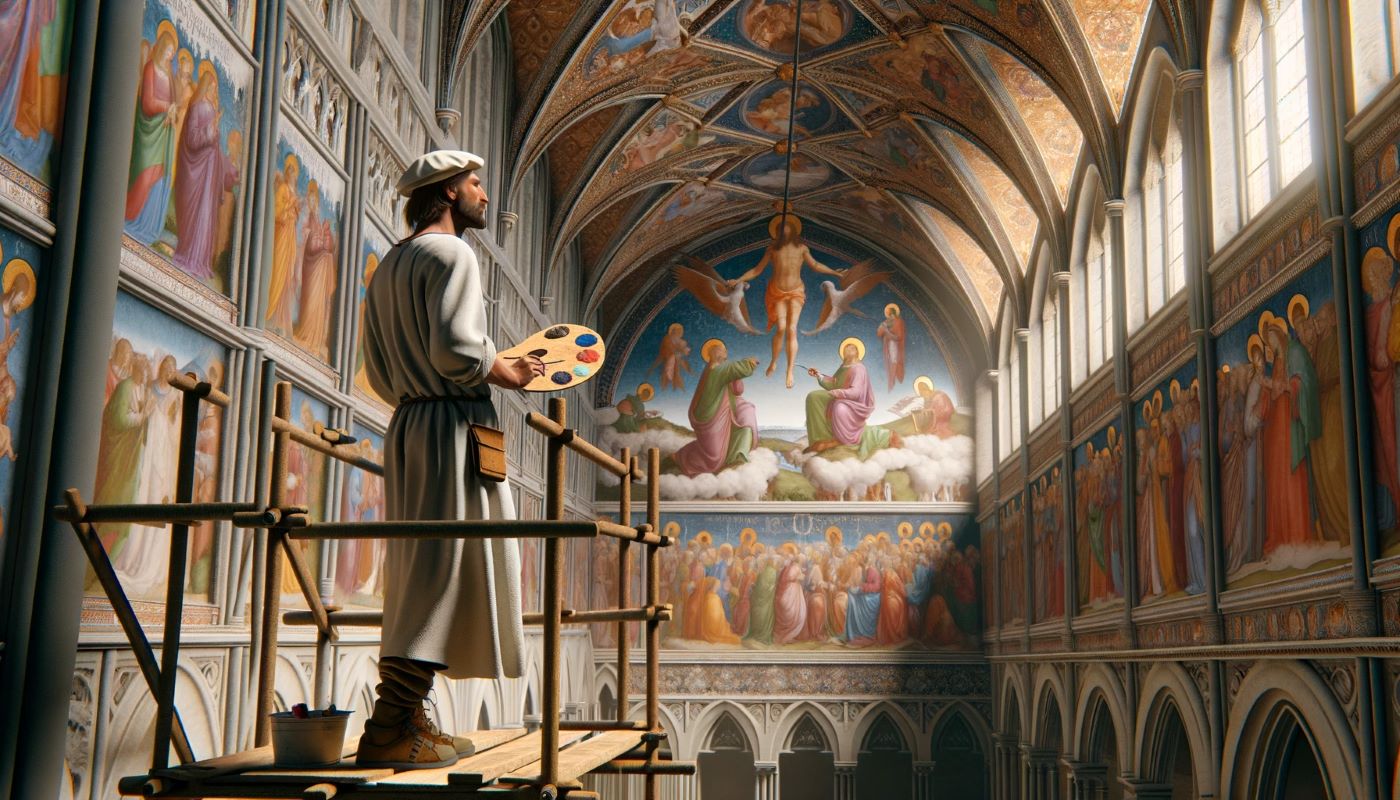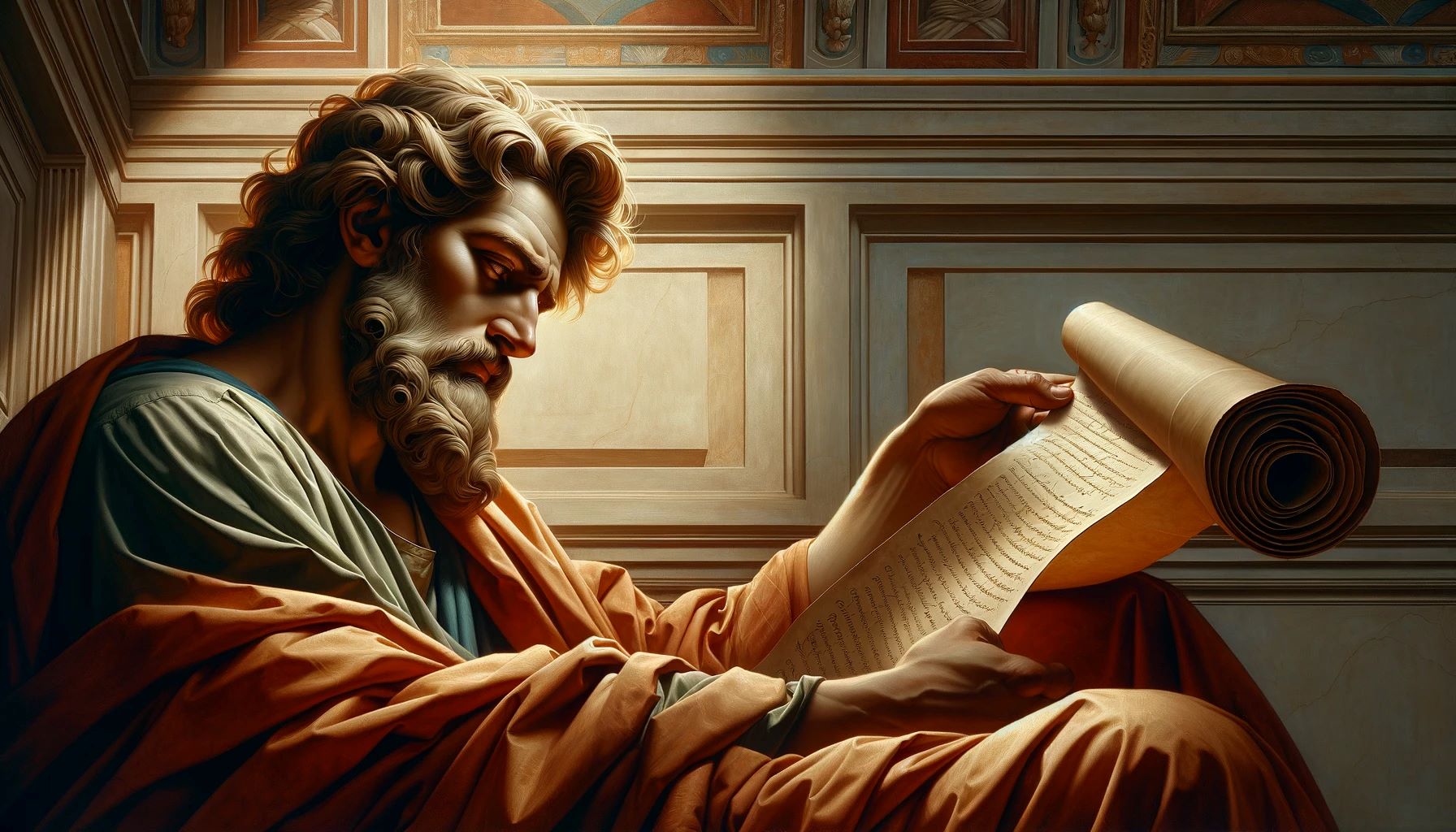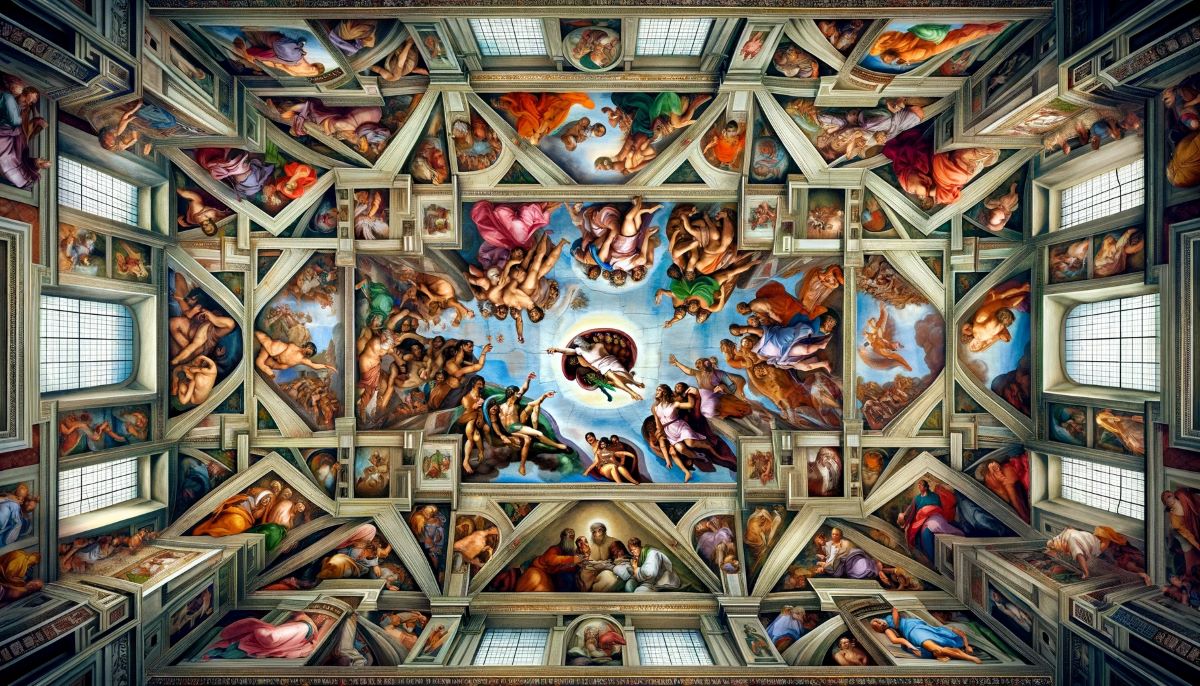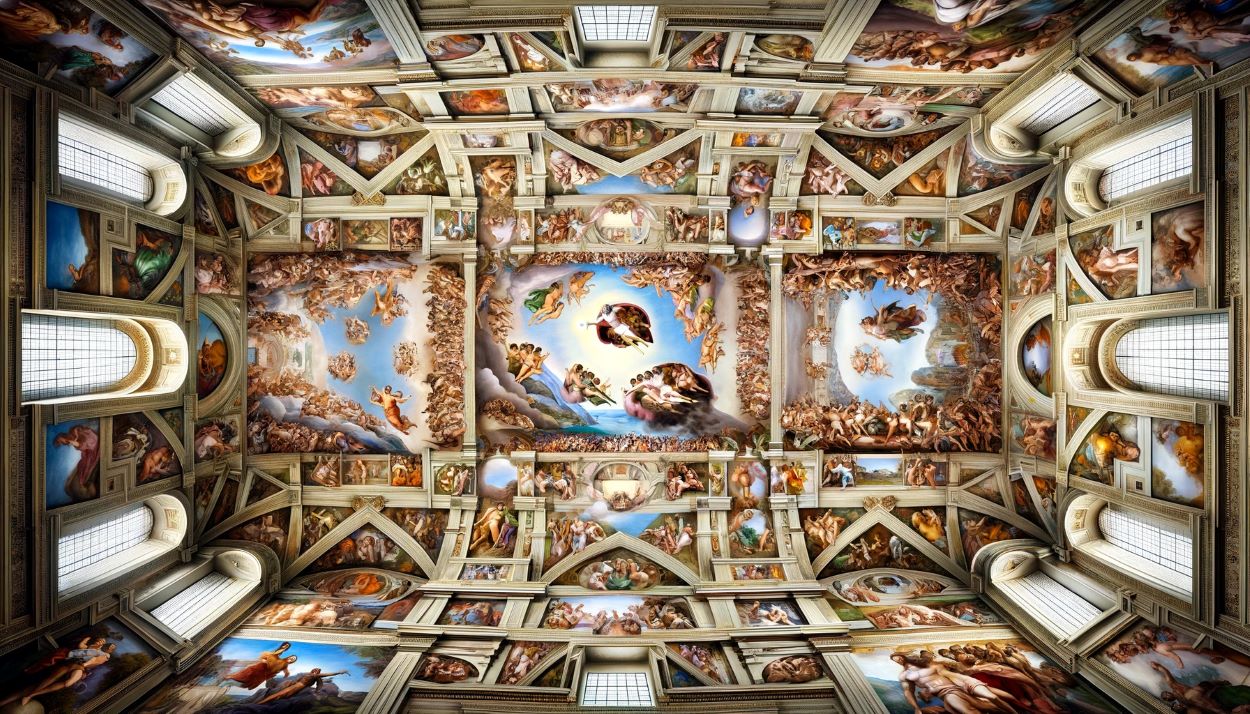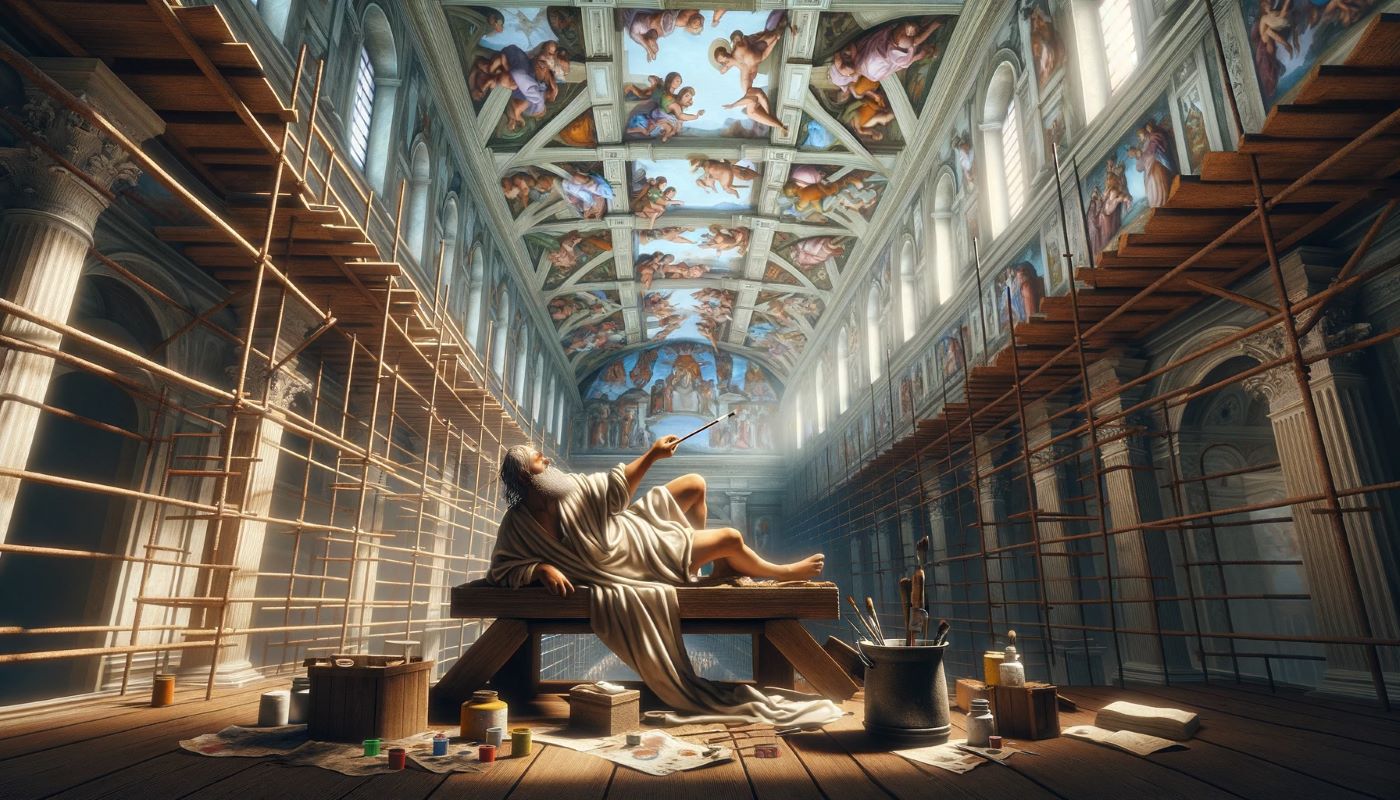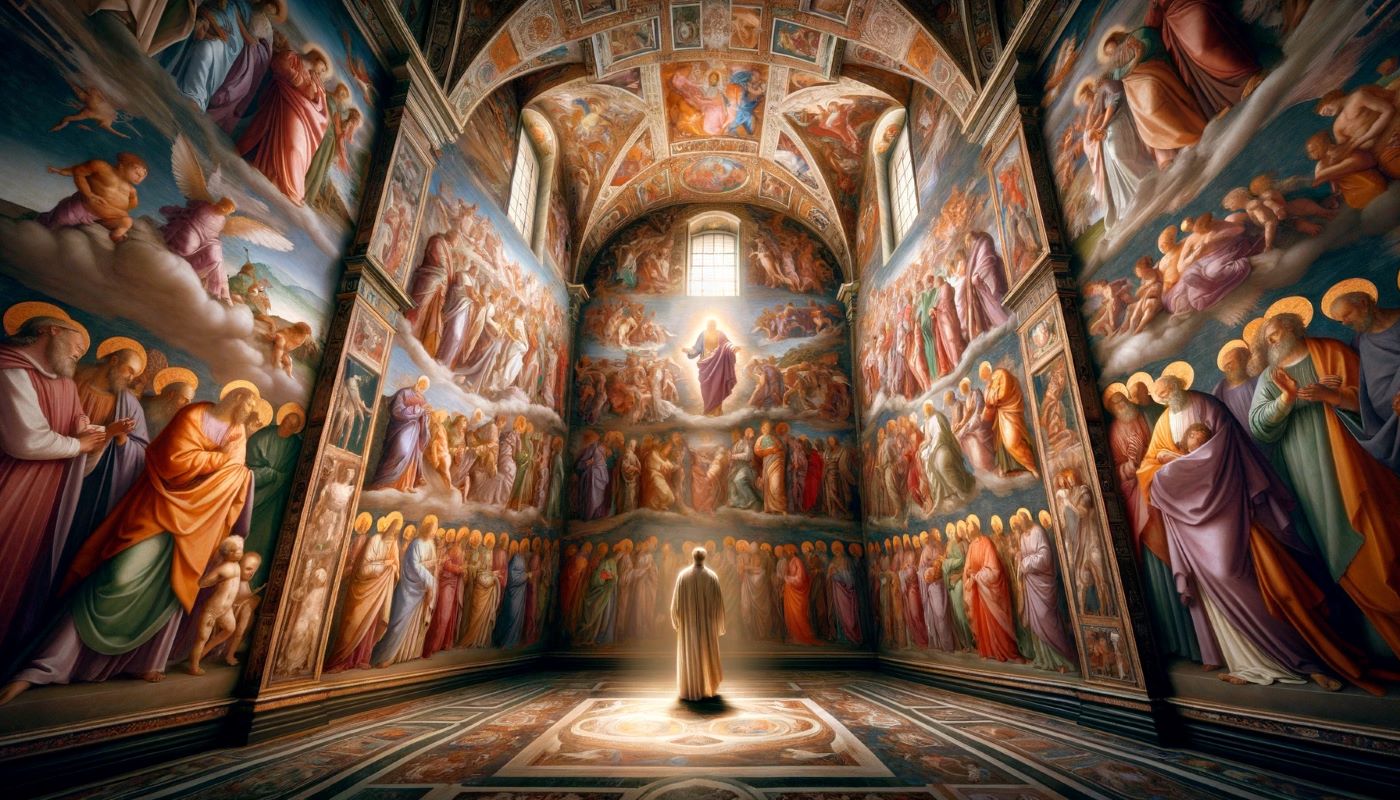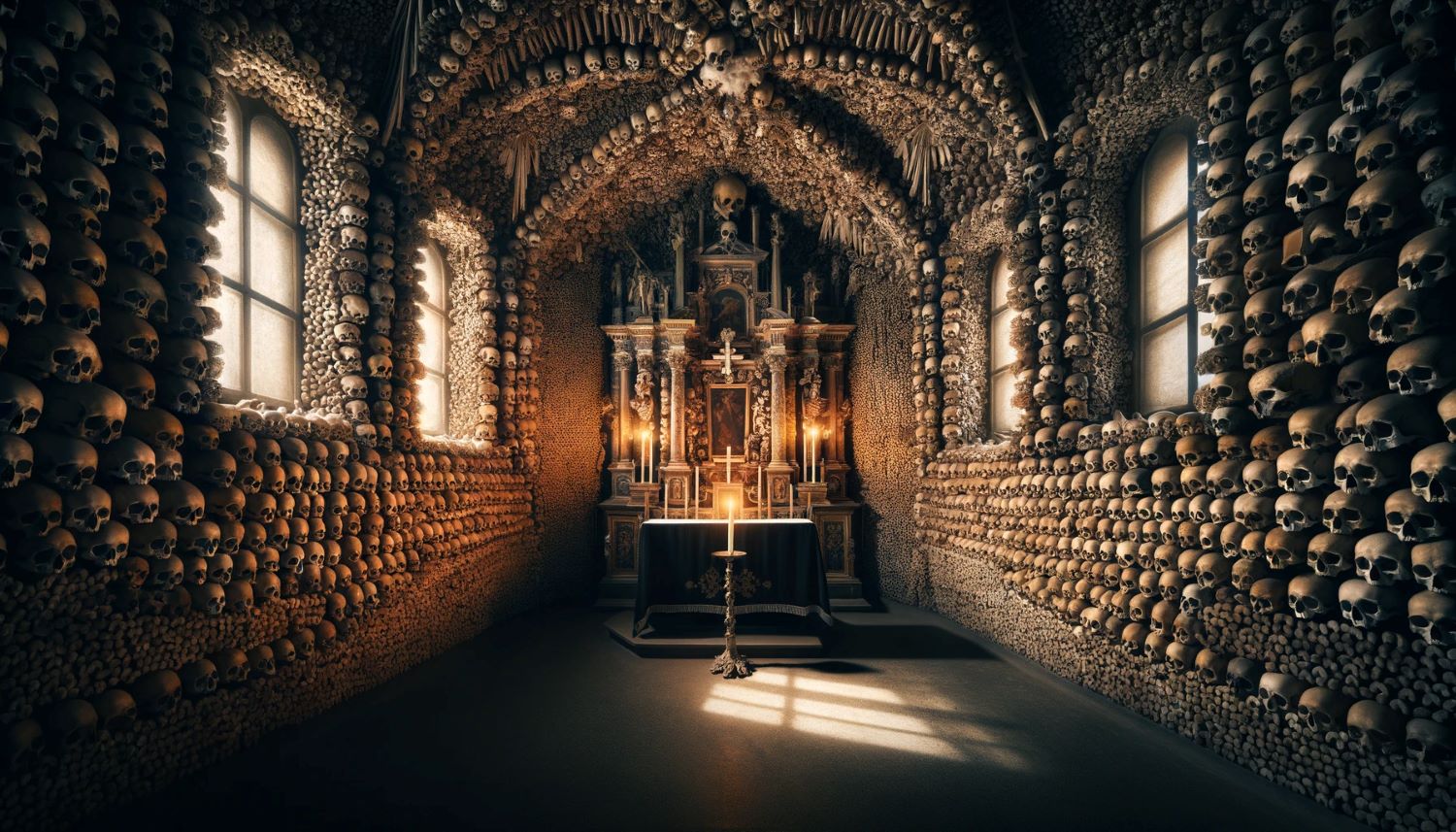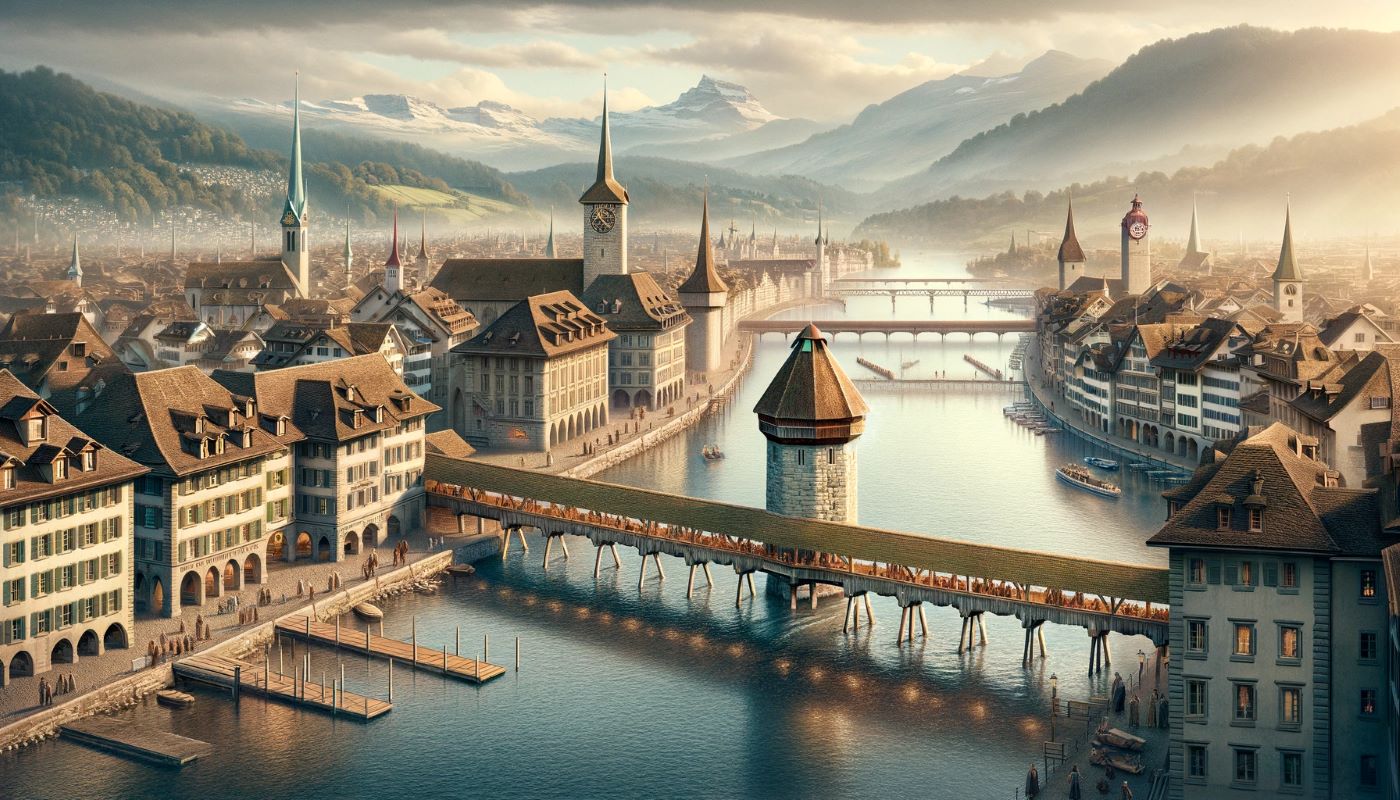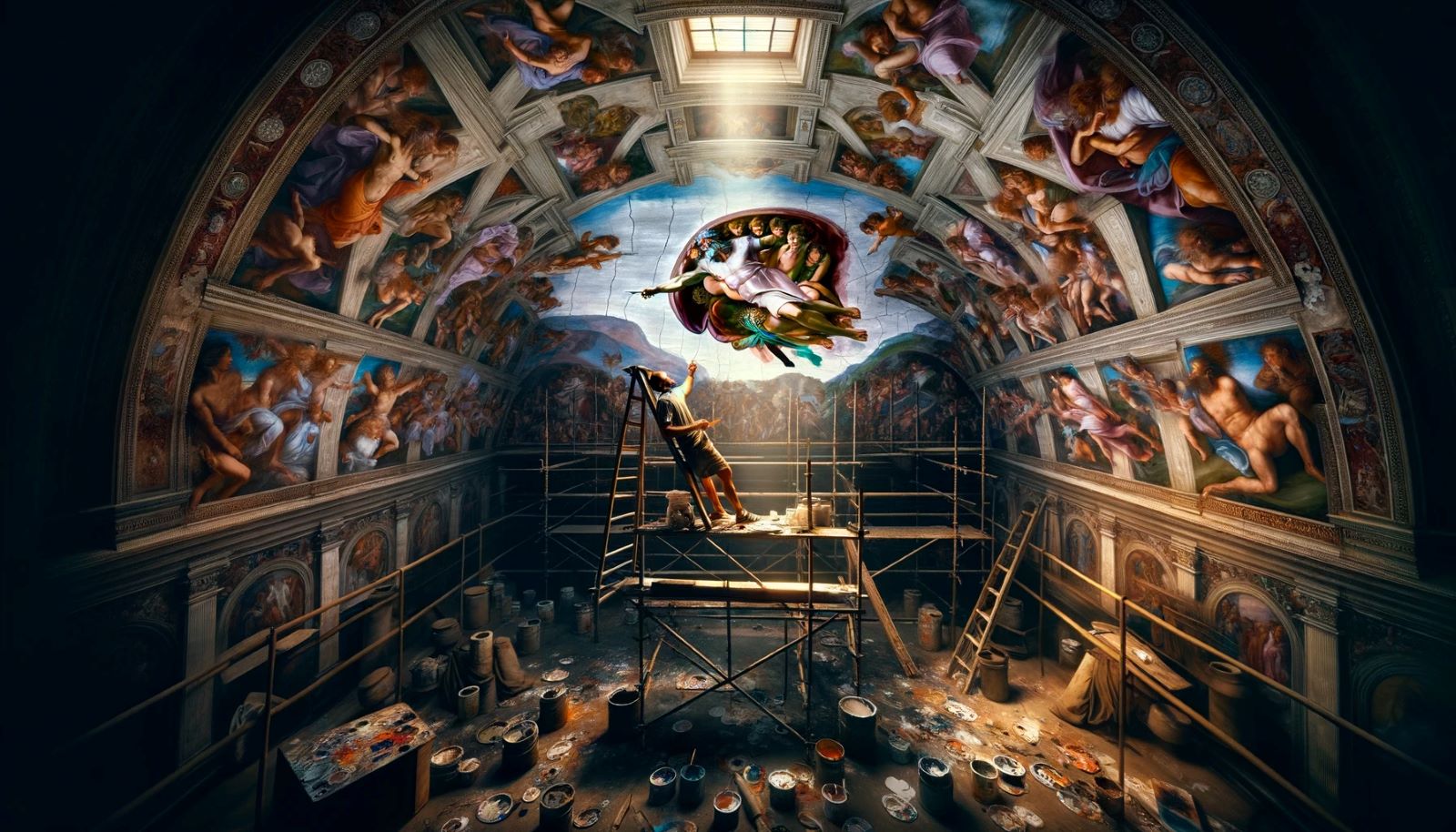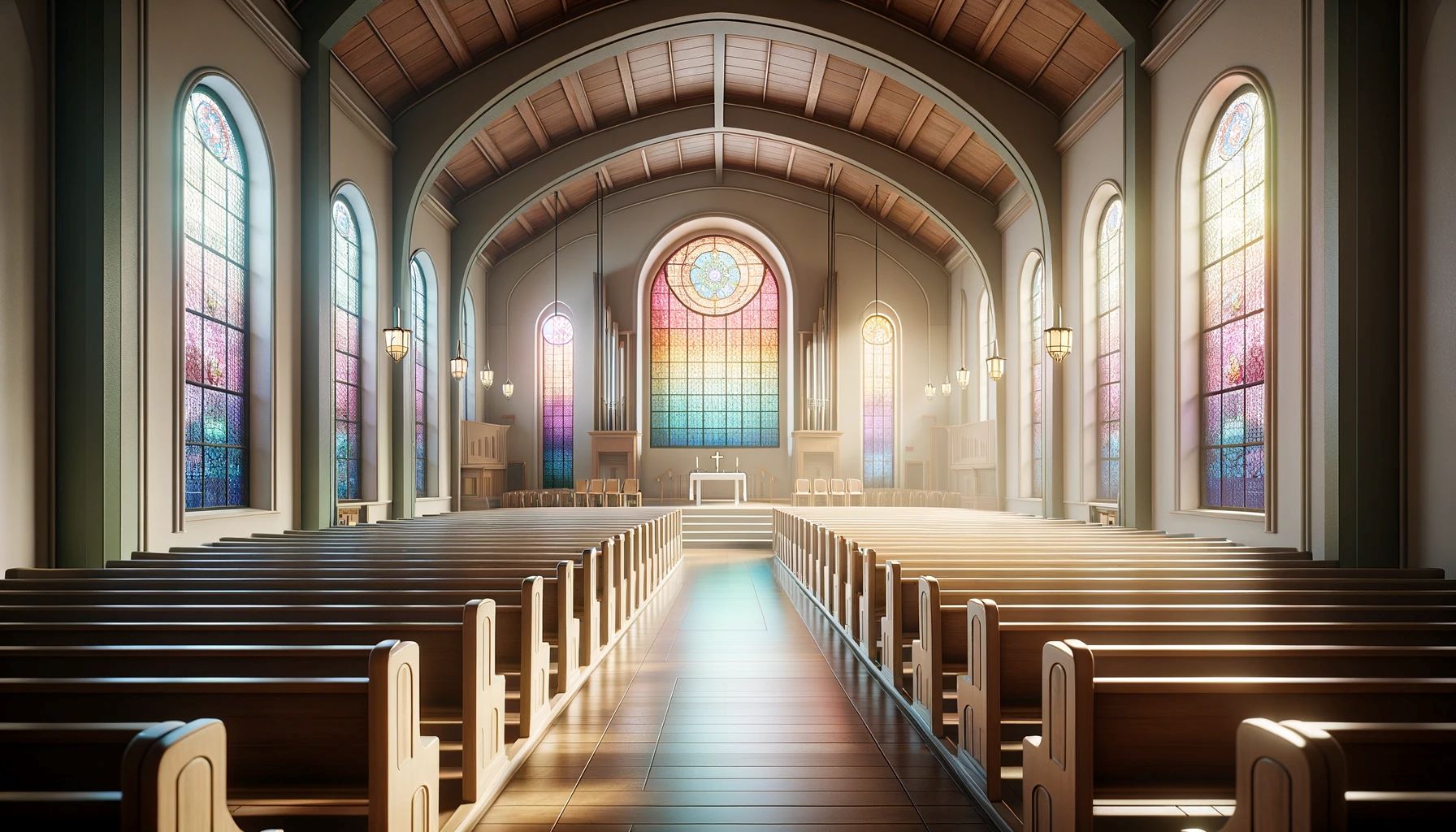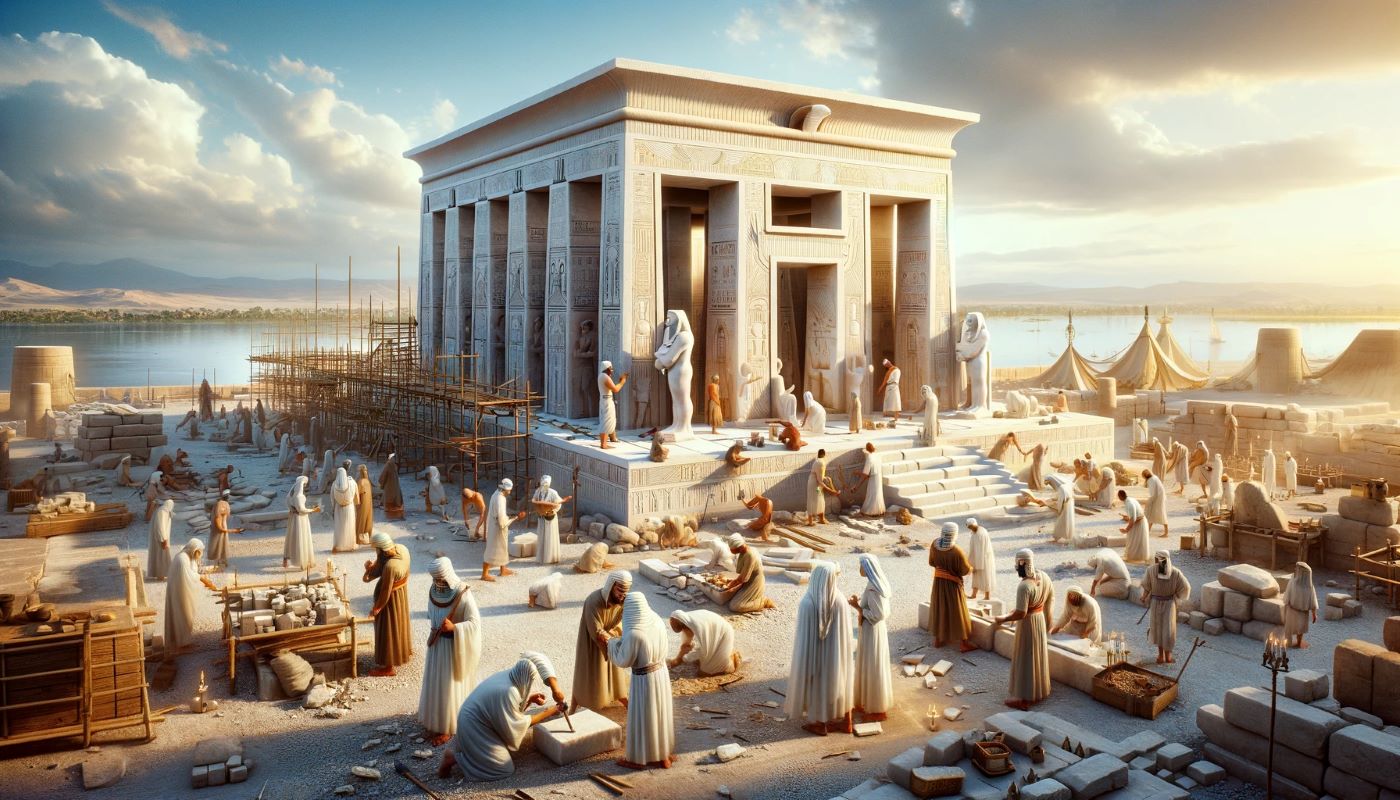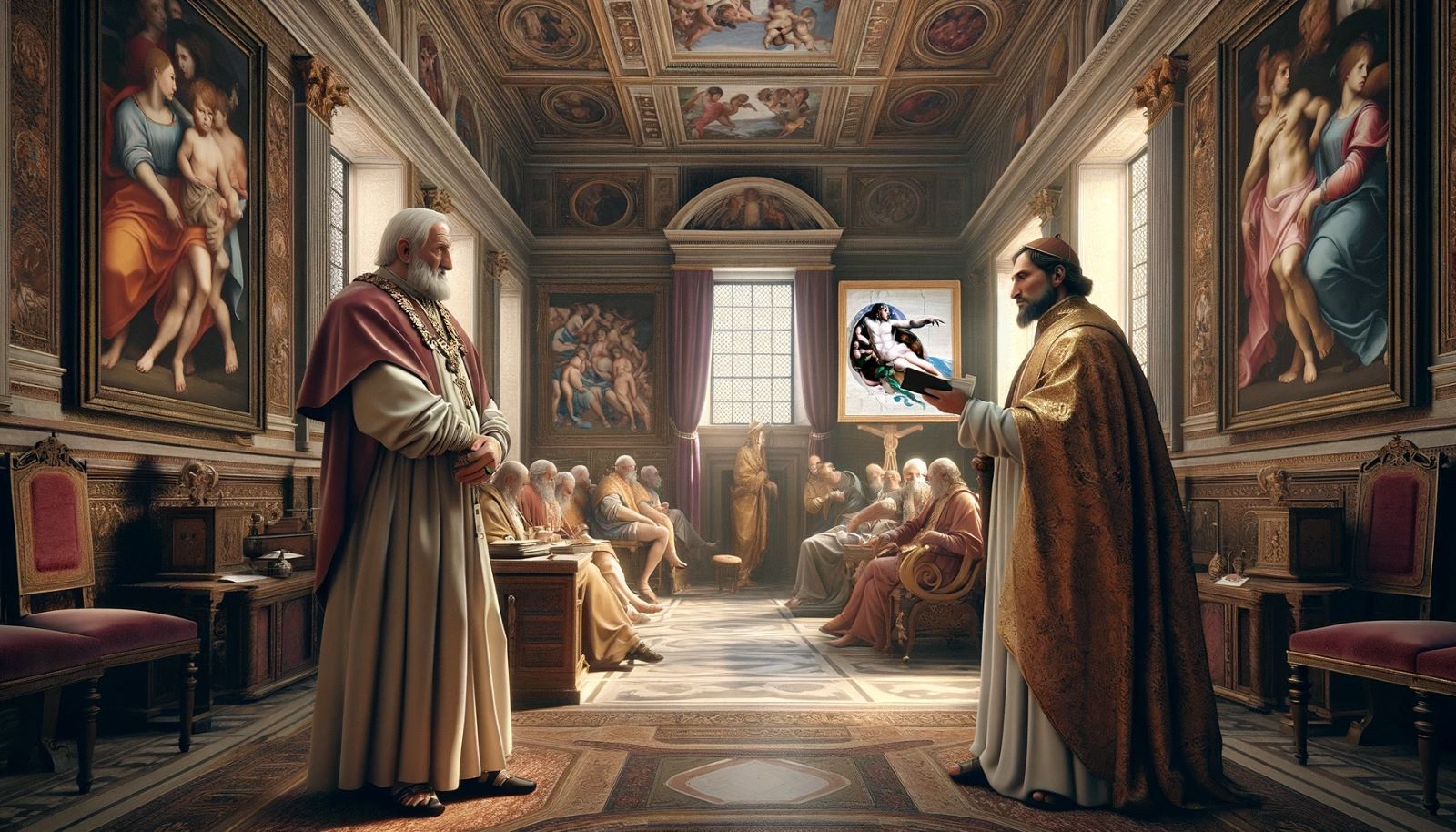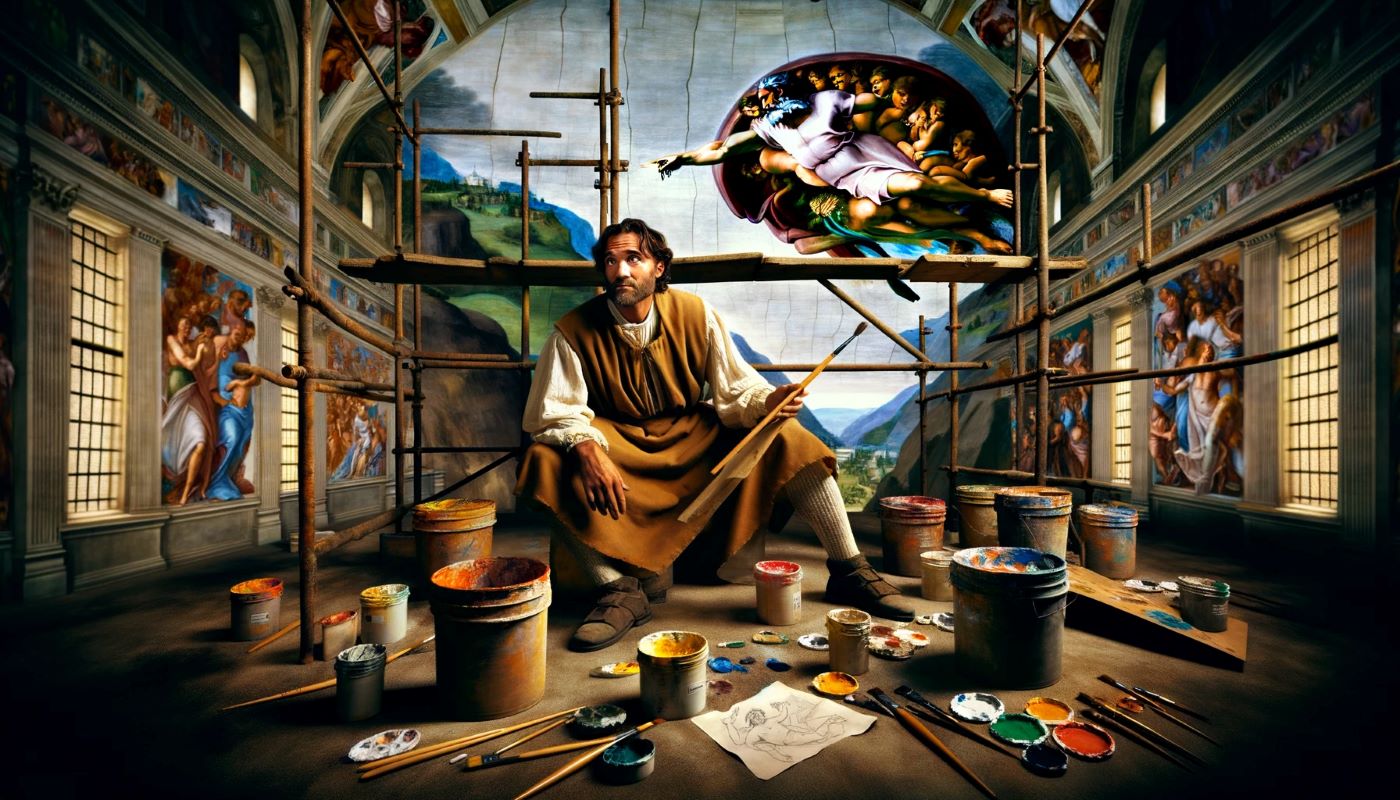Home>Arts and Culture>Why Are The Paintings In The Rothko Chapel So Dark
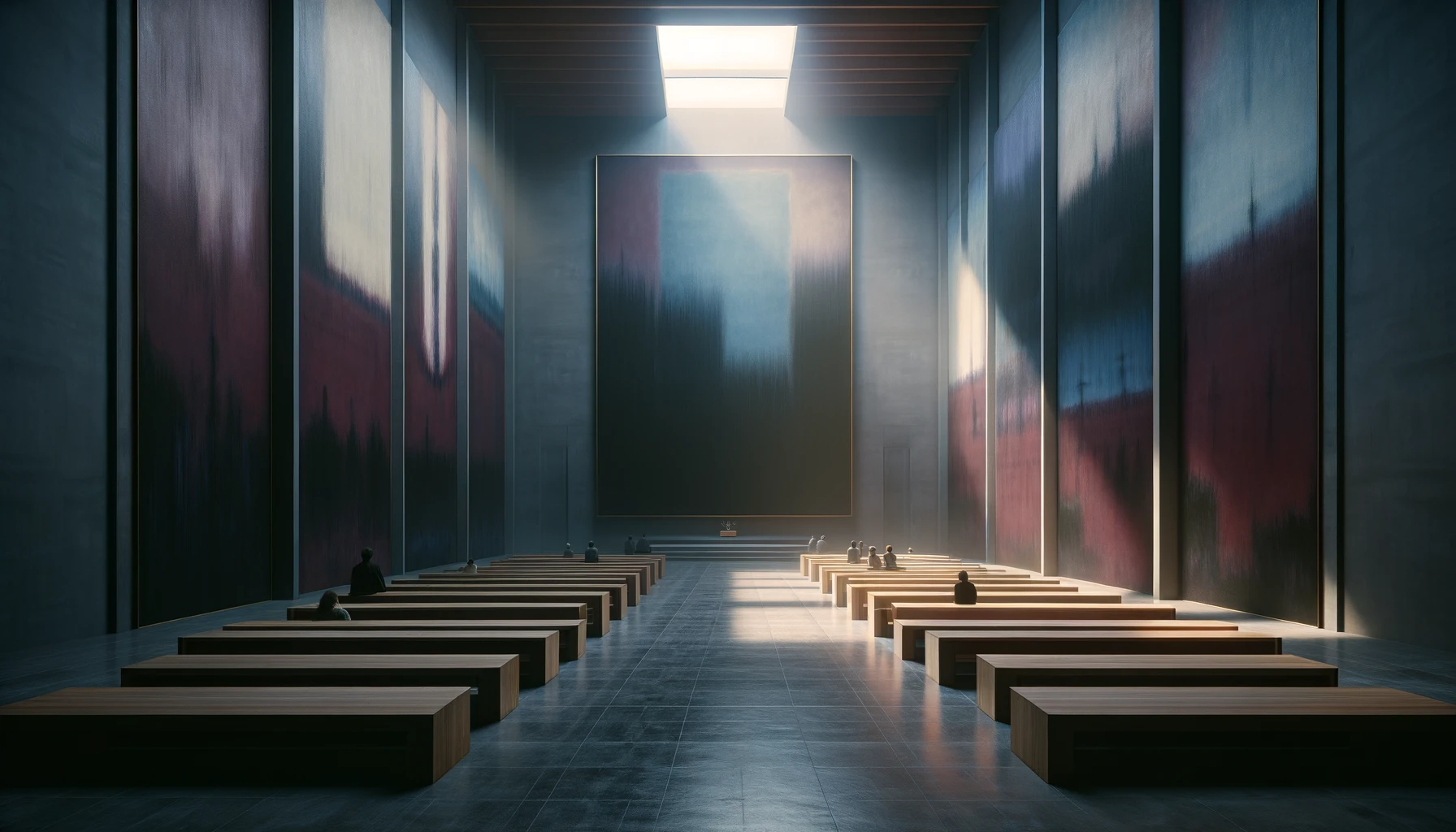

Arts and Culture
Why Are The Paintings In The Rothko Chapel So Dark
Published: March 4, 2024
Jason DeRose, Managing Editor at Christian.net, uses his expertise in religion and journalism to deepen understanding of faith's societal impacts. His editorial leadership, coupled with a strong academic background, enriches the platform’s diverse content, earning him recognition in both journalism and religious circles.
Discover the enigmatic allure of the Rothko Chapel's dark paintings and their profound impact on arts and culture. Explore the mystery behind these captivating masterpieces.
(Many of the links in this article redirect to a specific reviewed product. Your purchase of these products through affiliate links helps to generate commission for Christian.net, at no extra cost. Learn more)
Table of Contents
The Influence of Mark Rothko's Style
Mark Rothko, a prominent figure in the abstract expressionist movement, is renowned for his unique style of painting that often features large, dark canvases. His use of deep, intense colors and expansive, enveloping forms has had a profound impact on the art world. Rothko's style is characterized by its ability to evoke deep emotional responses and contemplation in viewers. His paintings, including those in the Rothko Chapel, are a testament to his mastery of color and form, and they continue to influence artists and art enthusiasts around the world.
-
Color Field Painting: Rothko is often associated with the Color Field painting movement, which emerged in the 1940s and 1950s. This style emphasized large areas of flat color and the interaction of color and form to create a sense of depth and emotion. Rothko's use of dark, brooding colors in his paintings, such as deep purples, blues, and blacks, became a hallmark of this movement.
-
Spiritual and Emotional Depth: Rothko's style is deeply rooted in his exploration of human emotions and the spiritual realm. His dark paintings are not meant to convey a sense of despair or gloom, but rather to elicit introspection and contemplation. The depth and intensity of his colors are intended to create a meditative and transcendent experience for the viewer, inviting them to delve into the depths of their own emotions and consciousness.
-
Architectural Scale: Another influential aspect of Rothko's style is the monumental scale of his paintings. The sheer size of his canvases, combined with the immersive nature of his color fields, creates a sense of awe and reverence. In the Rothko Chapel, the monumental dark canvases envelop the space, inviting visitors to immerse themselves in the contemplative atmosphere that Rothko sought to create.
-
Continued Influence: Rothko's style continues to inspire contemporary artists who seek to explore the emotional and spiritual potential of color and form. His innovative approach to painting has left an indelible mark on the art world, and his influence can be seen in the work of artists across various genres and mediums.
Mark Rothko's style, characterized by its use of dark, intense colors and monumental scale, has had a lasting impact on the art world. His ability to evoke deep emotional and spiritual responses through his paintings, particularly those in the Rothko Chapel, continues to captivate and inspire audiences, cementing his legacy as a master of abstract expressionism.
The Symbolism of Dark Colors in Art
-
Emotional Depth: Dark colors in art often symbolize emotional depth and introspection. In the context of the Rothko Chapel, the use of dark colors in Mark Rothko's paintings serves to evoke a profound emotional response in viewers. The deep, intense hues create a sense of introspection and contemplation, inviting individuals to delve into their own emotions and inner thoughts.
-
Mystery and Ambiguity: Dark colors can also symbolize mystery and ambiguity. In art, they often convey a sense of enigma and invite viewers to explore the hidden depths within the artwork. In the Rothko Chapel, the dark paintings by Rothko exude an air of mystery, prompting visitors to engage in a contemplative dialogue with the artworks and the space itself.
-
Transcendence and Spirituality: Dark colors can be symbolic of transcendence and spirituality. In the context of the Rothko Chapel, the use of dark, enveloping colors in Rothko's paintings creates an atmosphere conducive to spiritual reflection and transcendental experiences. The deep, expansive color fields invite visitors to transcend the physical realm and engage with the spiritual and metaphysical aspects of their existence.
-
Intensity and Passion: Dark colors often symbolize intensity and passion. In the Rothko Chapel, the deep, brooding colors in Rothko's paintings convey a sense of profound intensity and passion. The rich, velvety hues draw viewers into a deeply immersive experience, igniting a passionate response and stirring the depths of their emotions.
-
Contrast and Balance: Dark colors can symbolize contrast and balance within a composition. In the Rothko Chapel, the juxtaposition of dark, somber colors with moments of luminosity and vibrancy creates a harmonious balance within the space. The interplay of light and dark in Rothko's paintings serves to underscore the delicate equilibrium between opposing forces, inviting viewers to contemplate the interplay of light and darkness in their own lives.
The symbolism of dark colors in art, particularly in the context of the Rothko Chapel, encompasses a rich tapestry of emotional depth, mystery, transcendence, intensity, and balance. Mark Rothko's masterful use of dark hues in his paintings serves to create a contemplative and immersive environment, inviting visitors to engage with the profound symbolism inherent in his work.
The Role of Light and Space in the Rothko Chapel
-
Luminous Interplay: The Rothko Chapel is a masterful interplay of light and space, carefully designed to complement Mark Rothko's profound paintings. The natural light that filters through the skylight and illuminates the canvases creates a dynamic and ever-changing visual experience. As the light shifts throughout the day, it casts a transformative glow upon the dark paintings, infusing them with a sense of ethereal luminosity. This interplay of light and space imbues the chapel with a transcendent atmosphere, inviting visitors to engage with the artworks in a deeply contemplative manner.
-
Architectural Harmony: The architectural design of the Rothko Chapel plays a pivotal role in shaping the interaction between light, space, and the paintings. The octagonal shape of the chapel, with its stark, minimalist interior, serves as a harmonious backdrop for Rothko's monumental canvases. The expansive, open space allows the paintings to command attention while also creating an environment of quiet introspection. The deliberate architectural choices, including the use of natural materials and the absence of ornamentation, contribute to the chapel's serene ambiance, enhancing the impact of Rothko's dark, emotive paintings.
-
Temporal and Spatial Dynamics: The interplay of light and space within the Rothko Chapel extends beyond the immediate visual experience. Visitors are invited to navigate the space, moving closer to the paintings to witness the subtle nuances of color and form, and then stepping back to absorb the immersive impact of the entire composition. This spatial dynamic, coupled with the ever-changing natural light, creates a temporal dimension to the viewing experience. As visitors move through the chapel, the paintings reveal new depths and dimensions, fostering a sense of discovery and introspection.
-
Transcendent Atmosphere: The deliberate orchestration of light and space within the Rothko Chapel serves to cultivate a transcendent atmosphere that transcends the physical confines of the space. The interplay of natural light and the enveloping darkness of Rothko's paintings creates an environment that encourages spiritual reflection and contemplation. Visitors are enveloped in a meditative atmosphere, where the boundaries between art, architecture, and the natural world blur, fostering a sense of interconnectedness and transcendence.
-
Immersive Engagement: The role of light and space in the Rothko Chapel extends beyond mere illumination and architectural design; it actively shapes the viewer's engagement with the artworks. The interplay of light and darkness, the spatial arrangement of the paintings, and the contemplative environment collectively invite visitors to immerse themselves in a profound dialogue with the art. The chapel becomes a vessel for introspection and emotional resonance, where the interplay of light and space serves as a catalyst for deep, personal reflection.
The Rothko Chapel stands as a testament to the profound impact of light and space on the experience of art. Through its meticulous design and the interplay of natural light with Rothko's dark, emotive paintings, the chapel creates an environment that transcends the traditional boundaries of art and architecture, inviting visitors to engage with the profound emotional and spiritual depths of the human experience.
The Emotional Impact of Dark Paintings
-
Evoke Introspection and Contemplation: Dark paintings, such as those found in the Rothko Chapel, have a profound emotional impact on viewers. The deep, intense colors and expansive forms elicit a sense of introspection and contemplation. As individuals stand before these dark canvases, they are drawn into a dialogue with their own emotions and thoughts, experiencing a deeply personal and introspective journey.
-
Stirring a Range of Emotions: While dark paintings may initially evoke a sense of solemnity, they also have the power to stir a range of emotions within viewers. The rich, velvety hues and monumental scale of Rothko's paintings create an immersive experience that ignites a passionate response and stirs the depths of one's emotions. Visitors to the Rothko Chapel often find themselves moved by a complex interplay of emotions, ranging from introspection to profound intensity.
-
Invitation to Emotional Resonance: Dark paintings serve as an invitation to emotional resonance, prompting viewers to engage with their own inner emotional landscapes. The depth and intensity of the colors in Rothko's paintings create an environment that encourages visitors to connect with their own emotions on a profound level. The emotional impact of these dark paintings transcends mere visual appreciation, inviting individuals to explore the depths of their own emotional experiences.
-
Facilitating Personal Reflection: The emotional impact of dark paintings extends beyond the immediate visual experience, facilitating personal reflection and introspection. Visitors to the Rothko Chapel often find themselves immersed in a deeply contemplative atmosphere, where the dark canvases act as mirrors for their own emotional and spiritual journeys. The paintings become a catalyst for deep, personal reflection, inviting individuals to confront and explore their innermost thoughts and feelings.
-
Cultivating Empathy and Understanding: Dark paintings have the power to cultivate empathy and understanding within viewers. The emotional depth and intensity of Rothko's canvases create a shared emotional space, where visitors can empathize with the artist's own emotional expression. This shared emotional resonance fosters a sense of understanding and connection, as individuals find themselves drawn into a profound dialogue with the artworks and with each other.
The emotional impact of dark paintings, particularly those found in the Rothko Chapel, is a testament to the profound power of art to evoke introspection, stir a range of emotions, invite emotional resonance, facilitate personal reflection, and cultivate empathy and understanding. These dark canvases serve as conduits for deep emotional and spiritual experiences, inviting visitors to engage with their own inner worlds in a profoundly moving and transformative manner.
The Spiritual and Religious Context of the Rothko Chapel
-
Interfaith Sanctuary: The Rothko Chapel serves as an interfaith sanctuary, embracing the spiritual and religious diversity of all visitors. It was intentionally designed as a space for contemplation and dialogue, transcending specific religious denominations and welcoming individuals from all walks of life to engage in a shared spiritual experience.
-
Universal Themes: Within the Rothko Chapel, the dark paintings by Mark Rothko transcend specific religious narratives and instead evoke universal spiritual themes. The expansive, enveloping canvases invite visitors to explore profound questions of existence, mortality, and transcendence, fostering a sense of interconnectedness and shared human experience.
-
Meditative Environment: The chapel's serene and contemplative environment provides a sacred space for individuals to engage in personal reflection and spiritual introspection. The dark, emotive paintings by Rothko create an atmosphere conducive to meditation and prayer, inviting visitors to connect with their own spiritual beliefs and experiences.
-
Dialogue with the Divine: The dark paintings within the Rothko Chapel act as a catalyst for a profound dialogue with the divine. The deep, intense colors and monumental scale of the canvases create a sense of awe and reverence, inviting individuals to engage in a transcendent dialogue with the spiritual and metaphysical aspects of their existence.
-
Emotional and Spiritual Resonance: The spiritual and religious context of the Rothko Chapel extends beyond traditional religious frameworks, resonating with individuals on an emotional and spiritual level. The dark paintings serve as conduits for deep emotional and spiritual experiences, inviting visitors to explore the depths of their own faith, beliefs, and innermost thoughts.
-
Global Symbol of Unity: The Rothko Chapel stands as a global symbol of unity, fostering an environment of inclusivity and understanding. Its universal spiritual and religious context transcends cultural and religious boundaries, offering a space for individuals from diverse backgrounds to come together in a shared pursuit of spiritual contemplation and enlightenment.
The Rothko Chapel's spiritual and religious context encompasses a rich tapestry of interfaith sanctuary, universal themes, meditative environment, dialogue with the divine, emotional and spiritual resonance, and global symbol of unity. It stands as a testament to the power of art and architecture to transcend religious divisions and foster a shared spiritual experience for all who enter its hallowed space.

